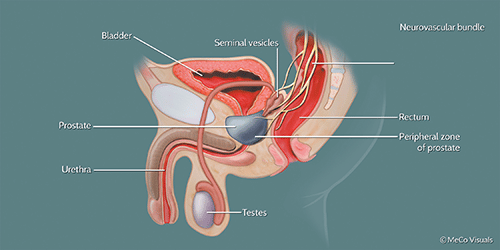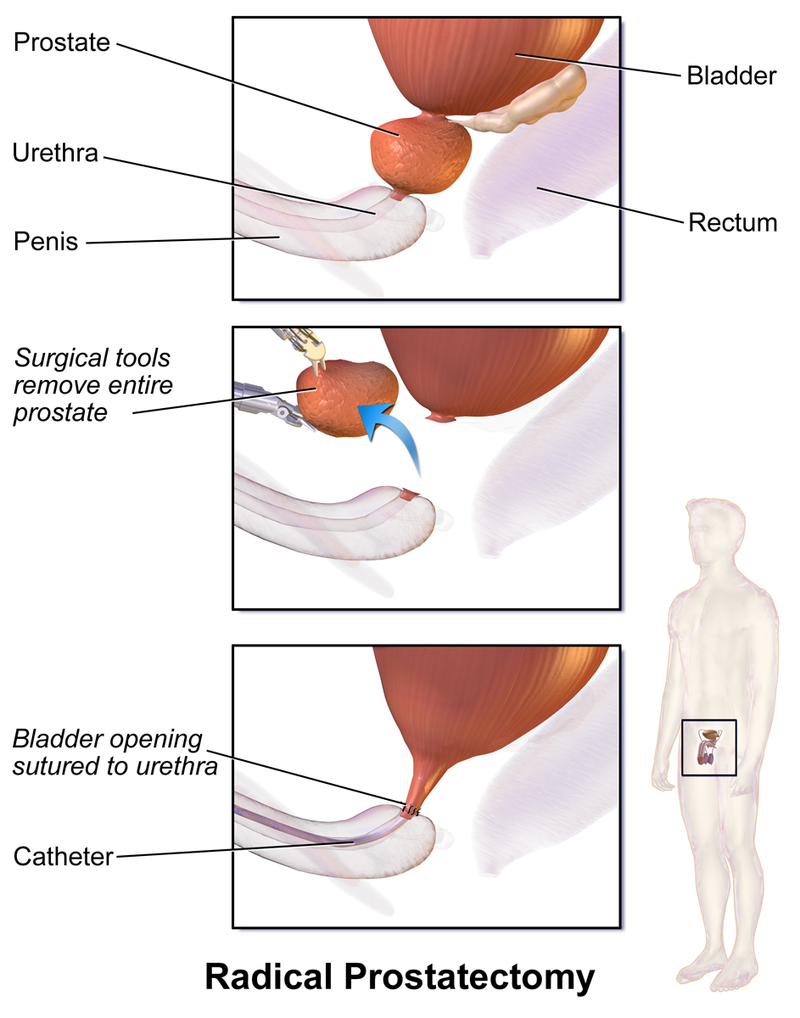Risks and Complications of Prostatectomy – Overview
Prostatectomy is the surgical removal of all or part of the prostate gland. The prostate gland is a small gland located deep inside the groin, between the base of the penis and the rectum.
It secretes an alkaline fluid that makes up about 30% of the volume of semen. The alkalinity of the semen helps to neutralize the acidity of the vaginal tract thereby prolonging the lifespan of sperm.
There may be a need for the removal of the prostate due to cancer or enlargement of the prostate.

Types of Prostatectomy
There are two main types of prostatectomies namely i. Simple prostatectomy and ii. Radical prostatectomy.
A simple prostatectomy involves the removal of part of the prostate. It is mainly carried out for patients with an enlarged prostate. A radical prostatectomy, on the other hand, is the removal of the entire prostate gland, the seminal vesicles, and the vas deferens and is performed for patients with cancer.

Risks and Complications of Prostatectomy
Like any surgical procedure, there are risks involved with the removal of the prostate gland.
Risks generally associated with any surgery include:
1. Bleeding – There is always a risk of bleeding following surgery from the incision made by the surgeon.
An injury to a blood vessel can cause bleeding after surgery. Other causes include medicines such as aspirin or anticoagulants (blood thinners).
2. Infection – There is also a risk of infection through the site of operation from pathogens such as bacteria, viruses, fungi, etc.
Severe irritation takes place if a latex catheter is inserted into the urinary tract of a person allergic to latex. That is especially severe in the case of a radical prostatectomy due to the open wound there and the exposure lasting e.g. two weeks.
Signs of an infection are fever, chills, intense pain, and a draining sinus. Further diagnostics tests may be done to confirm the diagnosis. Contact your doctor immediately if develop any of the signs.
3. Deep venous thrombosis – This refers to the formation of a blood clot in a deep vein following the surgery. Deep venous thrombosis is a serious complication of prostatectomy.
4. Heart attack or stroke – There is also the risk of developing a heart attack or stroke following prostatectomy. A blood clot from deep venous thrombosis that breaks off and travels through the body can cause heart attack, or stroke by lodging in the heart, or brain.
5. Death – Death may also result from prostatectomy as much as it can from any surgical procedure.
Risks specific to prostatectomy include:
1. Urinary incontinence – Prostatectomy patients have an increased risk of leaking small amounts of urine immediately after surgery, and for the long-term, often requiring urinary incontinence devices such as condom catheters or diaper pads. A large analysis of the incidence of urinary incontinence found that 12 months after surgery, 75% of patients needed no pad, while 9%-16% did.
Factors associated with increased risk of long-term urinary incontinence include older age, higher BMI, more comorbidities, larger prostates surgically excised, as well as experience and technique of the surgeon.
2. Erectile dysfunction – Surgical removal of the prostate has an increased likelihood that patients will experience erectile dysfunction. The likelihood of positive erectile function after the surgery depends on factors such as i. Technique – Nerve-sparing surgery has been found to reduce the risk that patients will experience erectile dysfunction.
ii. Age of Patient – The older the patient the higher the risk of erectile dysfunction.
iii. Experience of the surgeon – The more experienced and skillful the surgeon is, the less likelihood of impotence.
Remedies to the problem of postoperative sexual dysfunction include medications such as Viagra, penile injections, penile implants, and vacuum devices.


